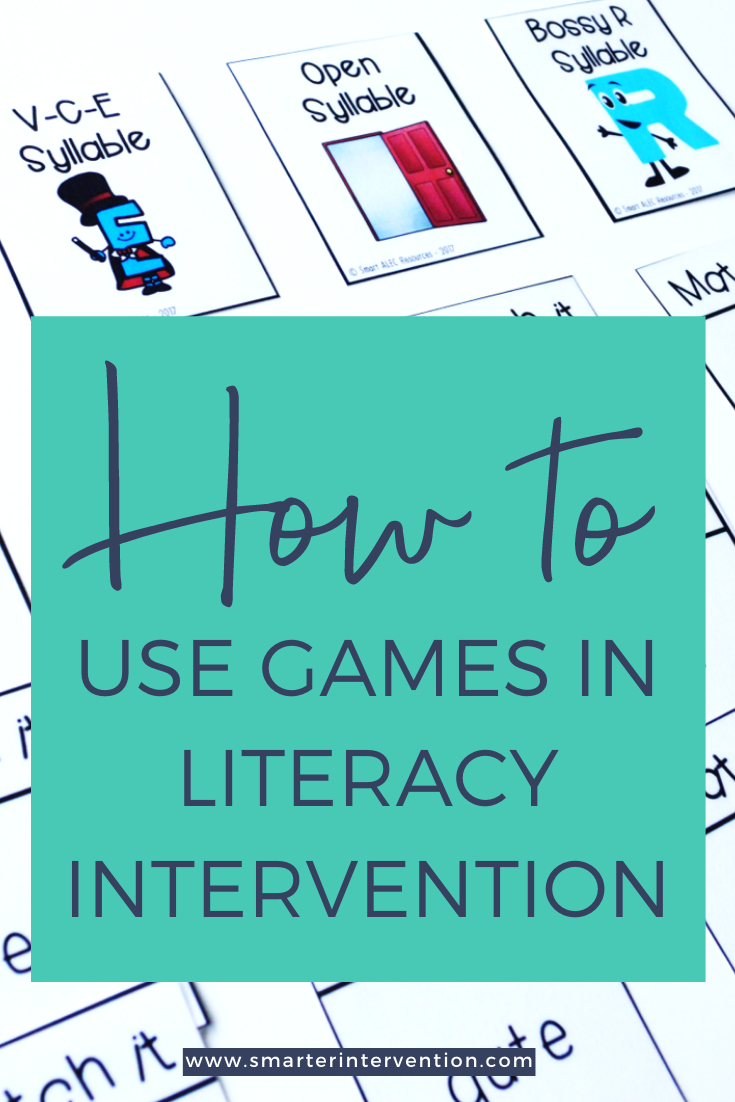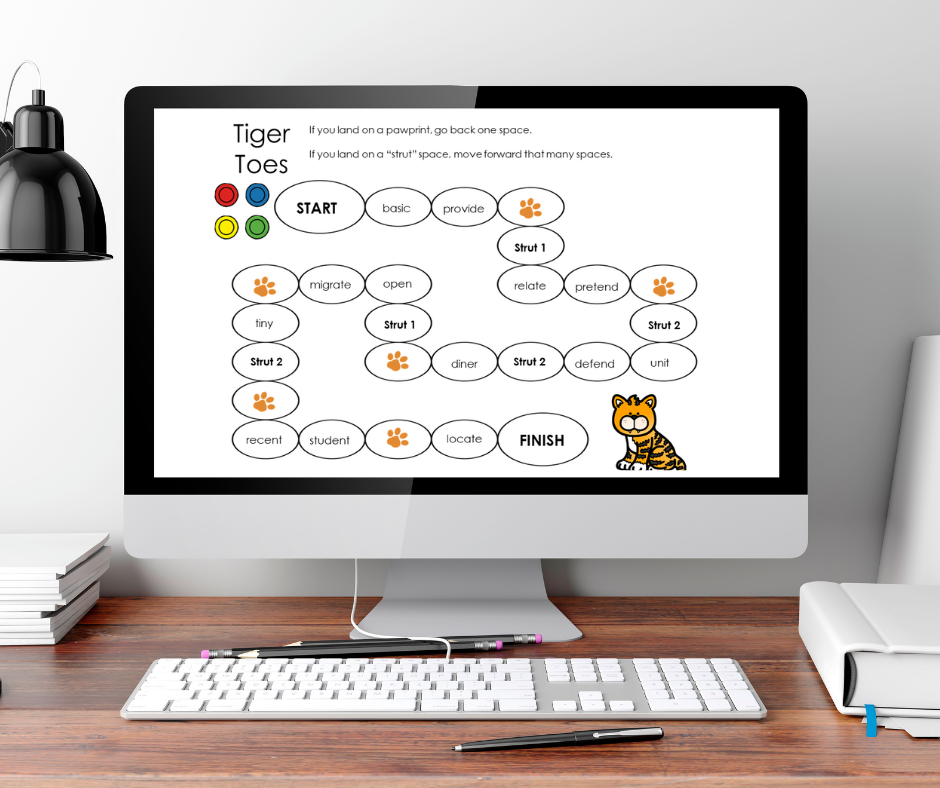How to use Games in Literacy Intervention
Hi friends!
Today, we want to talk about games. This is a topic we get questions about all of the time because they can be a great engagement strategy AND review activity for students (talk about a win-win)! Stick with us (this blog is longer than usual) because we are sharing some of our favorite games that you can start using with students today!
The best ways to use games in your literacy intervention
1. Use games to review and solidify skills
Games are a great way to differentiate your lessons to target specific skills with your students. Every week, we take data to see where our students are growing, where they consistently do well, and where they need extra support. When we find these holes and gaps, we supplement them with a review game to target tricky skills.
This could look different depending on the child. For example, let’s say that we are working with a student who is consistently erroring when it comes to decoding VCE words. We will pull a game, like our Silent E War game to add additional review into our lessons. If a student is struggling with dividing words, then we will pull a multisyllable word division game like our Rabbit Hole game so that we can target the students’ specific needs.
You can also find this game on Teachers Pay Teachers >>here.<<
Another great way to use games to review is to use games to check in on previously taught skills. We always like to take data on “review decoding” using words with patterns that have already been previously instructed. Instead of using a regular word list, we will often do this with games!
2. Use Games as an Engagement Strategy
As I mentioned above, you can use games instead of word lists to make your lessons more fun while still targeting whichever skills you need in each lesson.
You can also use games as a reward for students who need a little extra push during a lesson. This might look like saving the game until the last 5 minutes of the lesson and requiring that your student is able to get through all of the work in the lesson before playing the game or playing a game after an exceptionally tricky task. This is especially effective if students have a game that they look forward to playing.
You can even do this online with reading and spelling games that are made to be interactive!
You can grab this VCV division lesson (game included) here.
Gamifying Your Lessons Without Games
While we love specific games, let’s be honest. We have all been in lessons where we either forgot to bring a game, don’t have the one we want, or, need something else on the fly. The great thing about games and literacy intervention is that it doesn’t need to be fancy. Some of our favorite games are the ones we can play with minimal or no extra materials!
Dice Game
This has become a favorite for our students. All you need is a word list and dice (highlighters are optional but if you don’t have them, you can use pens/pencils). You and your student will take turns rolling the dice. One player will move across the list and the other will go down the list. Whichever word you land on is the word you have to read. The goal is to get to the last word on the list, first.
We love this game because students are still reading the word lists built into their lessons, but this gamifies it for them.
Vocabulary Game
When working on vocabulary, I often turn it into a game for my students. All you need for this game is a word list (I use the ones from whatever lesson I am working on that day). To play this game, one person will pick a word from the list without telling the other person/the group which word they picked. They then need to define the word thoroughly enough so that the other player/players can guess their word. To make sure the definition is thorough enough, we use our vocabulary framework which asks students to identify the word’s category, function/purpose, synonym, and antonym or shade of meaning. If there are any defining features for that particular word, students should include them as well.
For example, you might say “This word is a plant (category) that has gel inside that can be put on burns (function/purpose). It’s kind of like a succulent (synonym) but not like a tree (antonym/shade of meaning). It is green with long spikes and can be grown in a pot inside your house (defining features).” At this point, the other player(s) should be able to guess that the plant is aloe.
You can grab this OA/OE vowel team lesson here.
We love this game because we can play with our students to check on their understanding of words (when we give definitions) and check on how well they can define words. It also allows us to error correct and walk students through the thought process we went through when trying to figure out which word they defined. You can also differentiate it for younger students by using pictures!
If they aren’t quite ready to go through a full definition just yet, you can play by putting words into categories. You can either give them a list of words and ask them what category they all belong to or, you can give them a category and see how quickly they can find all of the pictures that would fit in that category. For example, in the picture above if I give my student the category “animals” they should find the elephant, zebra, mouse, chicken, fox, and dog as quickly as possible.
Whichever way you add literacy-based games into your lessons, they will add value. Be sure to make games your own. Some of our best games have come from us using games in ways they weren’t initially intended. For example, when you have a card deck that is meant as a reading game, you can use the cards as spelling words, or, you can pull a card and write a sentence around that word. Then, the next person pulls a card and has to continue the story with a sentence that includes the word they pulled.
Don’t be afraid to adapt games and resources to fit your setting, your students, and your ideas.
If you are looking for more games to add to your literacy intervention, check out our Teachers Pay Teachers store, here! If you’re looking for printed decks, you can grab them in our shop by clicking the button below!





